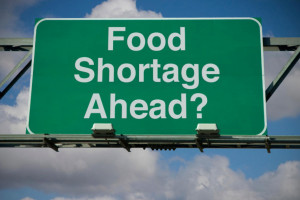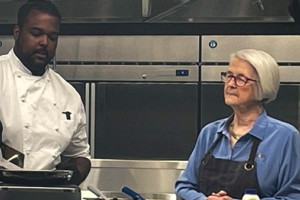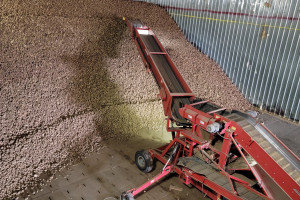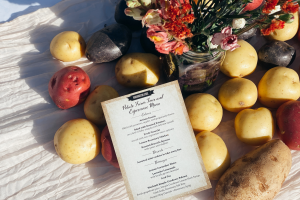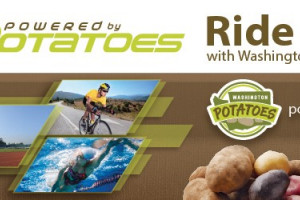White River 50K: Returning to where it all started
It was back in 2011 when I decided to take up ultra-running. I was on the verge of turning 50 and had become fascinated with the annual and iconic White River 50 mile run held near Mount Rainier. White River had grew into one of the country’s biggest and most famous 50 mile races attracting incredible talent from across the country. The idea of running 50 miles on trails over challenging and gorgeous terrain in such an exciting event intrigued me. How does somebody run that? Could I do something like that?
It had been some time since I took on a big physical challenge. Yes, I ran and hiked on a regular basis, but life and in particular my career as a writer was taking up a lot of time and energy. I hadn’t given much thought to getting out of my comfort level and seeing how far I could run in a day. Approaching 50 jolted me. It was time to halt the slide into complacency and accept a challenge. And what better way to celebrate turning 5-0 than by running 50 miles? There were probably lots of better ways, but this was the one I was intent on doing!
I ran my first marathon in the summer of 1990 at the age of 29. Four months later I ran what would be my fastest marathon ever (3.03.19) which qualified me for the Boston Marathon. My third marathon was Boston and it was one of my proudest and most memorable moments. But after that I went back to college and really started to put some direction in my life after my turbulent 20s. My running training became less of a focus. I got injured and I fell out of marathon shape.

On January 1, 2011 I was ready to commit to train for and run my first 50 miler. I had never run a race beyond a marathon, so I knew my training would be intense. In April I ran my first 50K, and followed it with several other 50K races and some challenging training trail runs. I committed myself to my goal by going public with it and turning it into a fundraiser for the Washington Trails Association. My friends and readers encouraged me. I wrote a monthly column in Northwest Runner about my training journey.
On July 30, 2011 I ran and completed my first (and to date only) 50 mile race. I had 14 hours to make the cutoff on the tough course which included more than 8,000 feet of elevation gain over two sustained climbs. I finished with 1 hour and 1 minute to spare. My wife, friends, followers, and many new acquaintances cheered me on all along the way. Ultra-running legend and race director Scott McCoubrey who hosted me the evening before was among the folks who provided me with incredible support. Coming over that finish line was (and still is) one of my proudest moments—and the first time I ever finished a run teary-eyed. I set out to do something that was unfathomable to me years earlier—and I did it!
I ran a few more ultras after that and ran trails on a continual basis, but for the most part began losing focus again on regularly running ultra-distances. In 2020 after a 6 year hiatus of ultra-marathoning I ran a 50k and immediately remembered how much I enjoyed the challenge. But by the end of 2020 in the height of the Covid Pandemic shockingly I was having a hard time completing a 10 mile run as my health was deteriorating.

In February of 2021, I was diagnosed with Polymyalgia Rheumatica PMR (an inflammation auto-immune disorder) and was immediately put on a prescription of prednisone. Within a couple of days I was able to regain full motion of my neck and move my legs and arms pain free. In essence I was born again and able to hike and run and live life as I have for years. But being on prednisone scared the hell out of me with its potential side effects of weight gain, decreased bone density and a slew of other problems. I overhauled my diet eliminating many processed foods and began to ultra-run again to keep my weight in check, strengthen my bones, keep my heart and lungs strong and to celebrate life—especially after being in pain and thinking that my life of hiking and running was over at age 59.
I continued to run marathons and ultra-marathons and push myself to levels I didn’t even think I was capable of doing when I was much younger. At age 60 along with a friend we ran around Oregon’s Mount Hood on the Timberline Trail—covering the 41 mile trail with its treacherous creek crossings and 10,000 feet of cumulative elevation in just over 15 hours.

Earlier this year I decided to up the ante once again and launched my 62 for 62 challenge. I decided to run my first 100K (62 miles) to celebrate my 62nd year of life! And in White River fashion, I targeted a race (the Cuyamaca 100K in San Diego County, California) that’s not an easy one—one that includes 8,800 feet of elevation gain over mountainous desert and chaparral with a 19 hour time limit. I am determined to complete that race successfully and I have been training hard to get there!
As part of my training plan I returned to White River this past July to run its 50K. As much as the 50 miler was tempting, I wanted to make sure I was staying on schedule for my training and not risking an injury; as I just came off of one earlier this year after completing a string of road marathons. I also wanted to run this race in race mode—that is hard and with the gear, food and liquids that I would be using at Cuyamaca. Sort of a trial run to see how things fall into place.
Running as a member of Team Potato and as an experienced ultra-runner this time around, White River was a little different. The magic I felt in 2011 was not there—the race is different now and in many ways so am I. But this year’s race had its own magic and I glowed upon coming over the finish line in 7 hours 54 minutes—completing a hard course of 6,400 feet of elevation gain complete with obstacles like downed trees. I was happy with my time, one that if I can keep that pace, will have no problem completing Cuyamaca in time. And I felt great after the finish too—not too sore, just tired—like I ran 50 kilometers of hard mountainous terrain at race pace. White River 2023 was a success.
It’s so inspiring to see so many new and young trail runners out there. I wished that I had started this pursuit earlier in my life to be able to run faster times and be more competitive. But that’s water under the bridge. You can’t go back into the past. But again I reminded myself to be incredibly content and grateful that at age 62, I could still run this event. I was the oldest race finisher and I had a stronger finish than many of my fellow participants decades younger than me. I also reminded myself that so many of my peers are dealing with ailments and diseases that don’t allow them to do many physical things—I can still run long and strong and at an age when most folks continue to slow down—a time when many folks think their best days and biggest achievements are in the past. I won’t have any of that! I’ve got too much life left to live and I am determined to go where I have never gone before—that 100K in October being one of them.

I really missed racing during the Covid shutdowns because so much of being an ultra-runner is being part of a community that many folks just don’t understand. You run how many miles? It’s unfathomable to many folks. So being back in races among my tribe—a diverse group of people who share a love of trails and distance running is invigorating. And it’s great to be among the folks who make these events happen. New White River race director James Varner of Rainshadow Running is one of them. I first met James in 2007 when I signed up for one of my very first trail runs. James was on the vanguard of trail running decades ago—a pioneer in the Northwest ultra-scene.
He welcomed me to the race and congratulated me (and all of the other runners) at the finish line. And it’s only fitting too that long time director Scott McCoubrey was at this year’s event volunteering at one of the aid stations. I hadn’t seen Scott since White River 2011, and it was so special for me to see him this year—as he was one of the main reasons I became an ultra-runner. White River will always have a warm spot in my heart. This event had changed my life and this year’s event gave me the encouragement and confidence to keep my eyes on the Cuyamaca prize!

